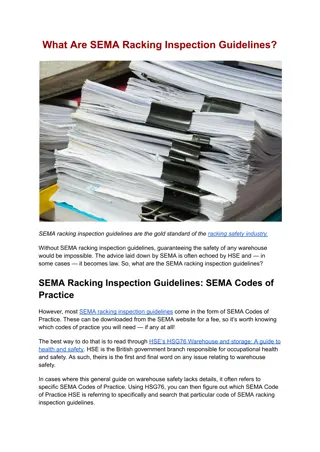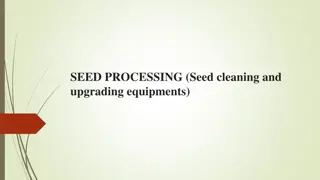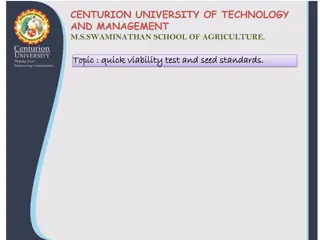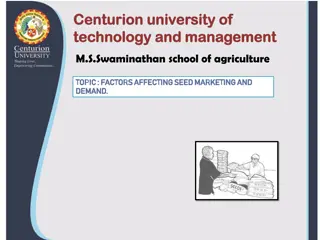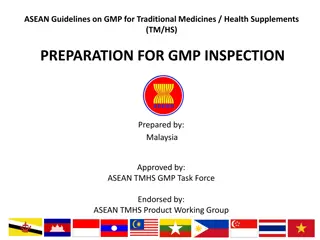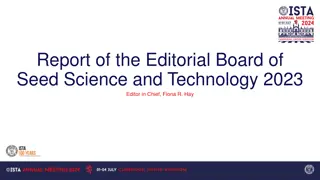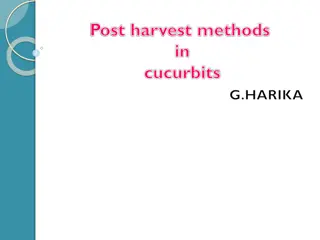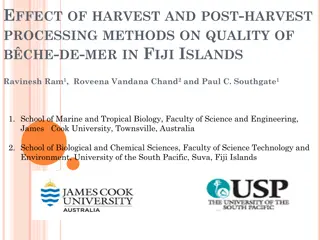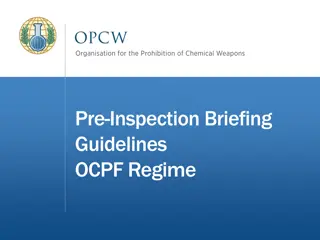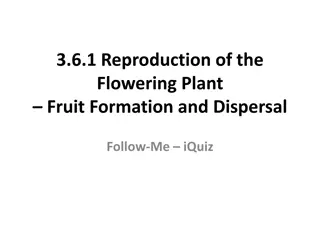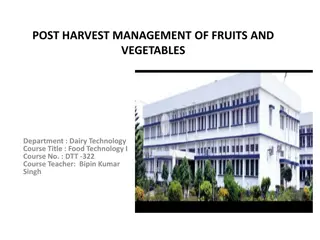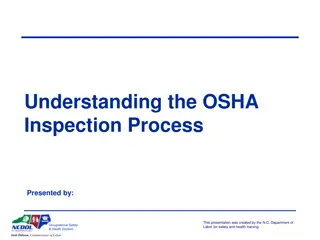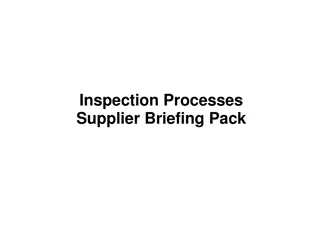Seed Post-Harvest Inspection and Processing Guidelines
The post-harvest inspection and processing of seed crops involve various crucial steps from pre-cleaning to seed treatment, bagging, and storage. Following specific prerequisites ensures the quality of the final seed lot. Inspection during processing and seed sorting in different crops is essential to maintain quality standards. Tagging approved seed lots with certification tags is necessary for identification and traceability.
Download Presentation

Please find below an Image/Link to download the presentation.
The content on the website is provided AS IS for your information and personal use only. It may not be sold, licensed, or shared on other websites without obtaining consent from the author.If you encounter any issues during the download, it is possible that the publisher has removed the file from their server.
You are allowed to download the files provided on this website for personal or commercial use, subject to the condition that they are used lawfully. All files are the property of their respective owners.
The content on the website is provided AS IS for your information and personal use only. It may not be sold, licensed, or shared on other websites without obtaining consent from the author.
E N D
Presentation Transcript
CENTURION UNIVERSITY OF TECHNOLOGY AND MANAGEMENT M.S.SWAMINATHAN SCHOOL OF AGRICULTURE. Topic : post Topic : post- -harvest inspection harvest inspection processing,bagging and tagging. and tagging. processing,bagging
Supervision of post harvesting and Seed Processing upgrading operations and sampling The post harvest inspection of a seed crop covers the operations carried out at the threshing floor, transport of the raw seed produce to the processing plant, precleaning, drying, cleaning, grading, seed treatment, bagging and post processing storage of the seed lot. processing Pre-requisites for processing 1.Processing report should accompany the seed lot 2.Seed should be processed only in approved processing unit. 3.ODV test for paddy should be done at the time of sealing and issue of processing report or before processing. If the result exceeds 1% of the produce may be rejected. 4.It should be correlated with the estimated yield
Intake of raw produce and lot identification The seed certification officer in-charge of the seed processing plant may, after verification of the above stated documents and total amount of seed accept the produce for processing. After verification he should be issue a receipt to the seed grower. Each seed lot has tobe allocated a separate lot number for identification. Processing of seed lot 1.It is done to remove chaff, stones, stem pieces, leaf parts, soil particles etc from the raw seed lot. 2.Grading to bring out uniformity in the seed lot. 3.Seed treatment to protect it from storage pests and diseases. Processing inspection 1.The processing should be done in the presence of concerned seed certification officer. 2.The recommended sieve size should be used for grading 3.The recommended sieve size should be used for grading 4.This is done by conducting a float test. Take 400 seeds from the processed seed and put in to a tumbler of water. Count the floating paddy seeds. Maximum float admissible is 5%. If the float seeds exceed the limit, adjust the air flow or feeding to perfect the processing.
4. maize before shelling the cobs should be examined for off type and off coloured kernels. Individual cobs should be examined with reference to its vareital characters. The cobs of off types and off coloured kernels should be rejected. 5. Seed sorting in cotton. The ginned seeds will be evaluated for its quality. A maximum of 3 % for the following factors can be taken into accounts. 1.Immature seeds 2.Ill filled seeds 3.Broken seeds 4.Stained seeds and 5.Over fuzzy seeds
. Tagging Approved seed lots should be tagged with certification tag within two months from the date of the receipt of seed analysis report or within 30 days from the date of genetic purity test performed. On receipt of the seed tags, it is verified by the Seed Certification Officer. All the prescribed details are entered in the tag without any omission. The green colour (10 15 cm size) producer tag should also be attached to the seed lot along with the certification tag. Avoid stitching more than once on the tags. All the tagging operations should be done in the presence of the Seed Certification Officer. If tagging has not been done within the specific time limit, confirmation samples can be taken with prior permission from the Assistant Director of Seed Certification. In such cases the validity of the seed lot will be fixed from the initial date of seed analysis and tagged. The fee for the delayed tagging is Rs. 50/- (Rupees fifty only) and seed analysis fee of Rs. 30/- (Rupees thirty only) has to be paid in such cases
Validity period The certified tagged seed is valid only for a limited period of time, say nine months from the date of seed sample testing for all seed crops. If the particular seed lot is not sold out within this period, revalidation of additional six months can be made only if the seed lot meets out necessary seed standards.
Bagging Bagging After receiving the seed analytical report the Seed Certification officer will get the tag from the ADASC and affixes labels (producer's label) and tags (blue for Certified Seed and White for Foundation Seeds) to the containers and seals them to prevent tampering and grants certificate fixing a validity period for 9 months. Tagging should be done within 60 days of testing.







